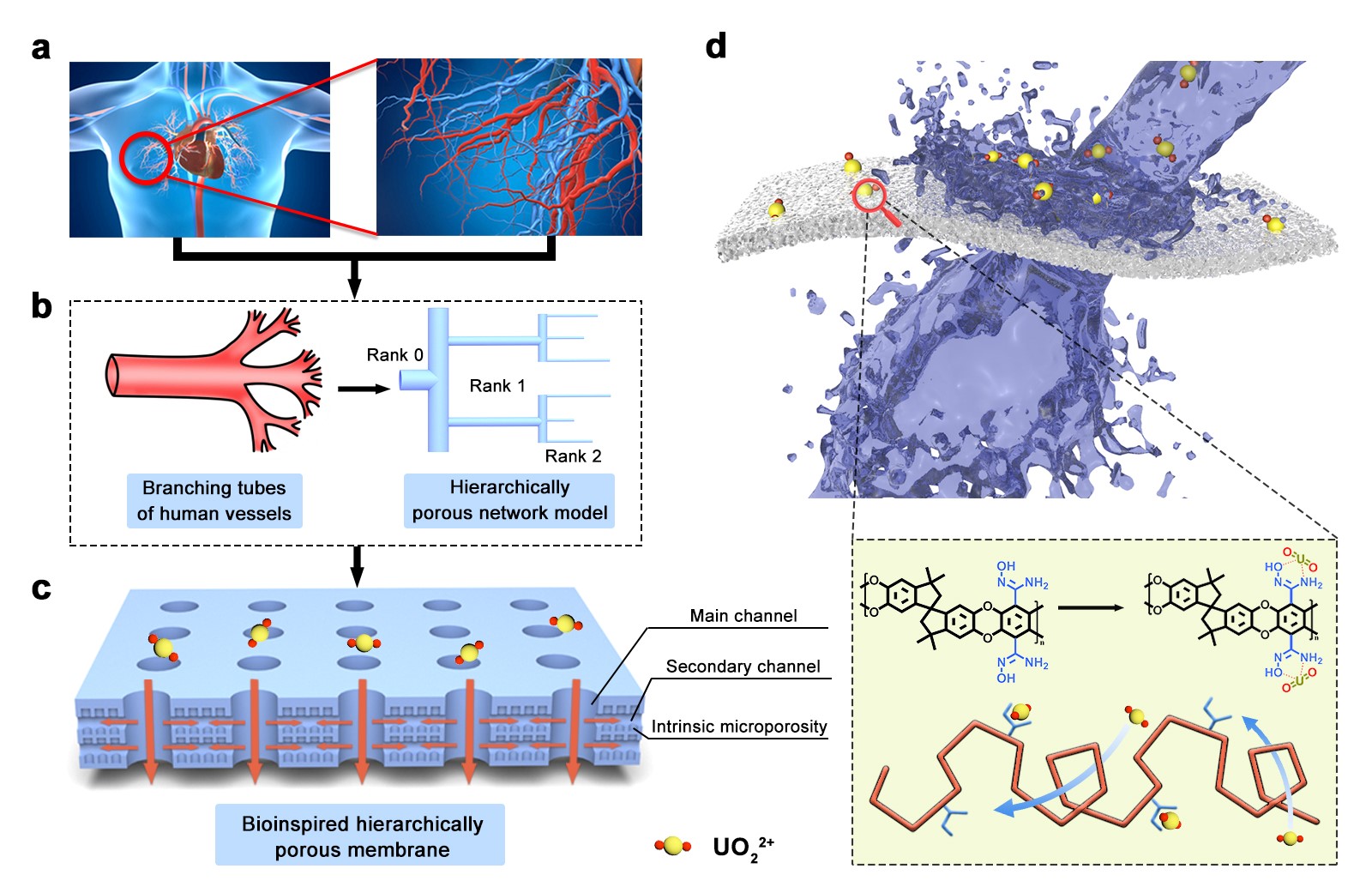In a study published in Nature Sustainability, researchers reported a bioinspired hierarchical porous membrane based on intrinsic microporosity polymers for enhanced extraction of uranium from seawater.
Led by Prof. JIANG Lei and Prof. WEN Liping from the Technical Institute of Physics and Chemistry of the Chinese Academy of Sciences, the researchers fabricated the membrane with traditional non-solvent-induced phase separation, which can achieve higher numbers of interconnected multiscale channels.
Oceans contain abundant uranium resources for sustainable nuclear energy generation. But low concentration and competitive adsorption require efficient uranium adsorbents. As promising candidates, microporous polymers with rich binding sites have been extensively studied. However, microstructural design for better mass transfer, which can improve adsorption performance, has rarely been mentioned.
“Fractals such as blood vessels are ubiquitous in biological systems. They allow for the optimised exchange and transformation of substances. It has inspired us in designing new adsorbents,” said YANG Linsen, first author of the study.
In this research, amidoxime functionalization offers abundant adsorption sites. The fractal structure of the membrane decreases resistance to uranium migration and leads to rapid ion diffusion. Adsorption performance is therefore improved.
Experimental results confirm lower resistance during uranium migration in the bioinspired hierarchical porous membrane.
According to the researchers, the membrane exhibits a uranium adsorption capacity in uranium-spiked solution 20 times higher than a membrane with only intrinsic microporosity. Additionally, the capacity of the adsorbent does not obviously decrease after five adsorption/desorption cycles.
Furthermore, in natural seawater, the membrane exhibits a uranium adsorption capacity as high as 9.03 mg/g after four weeks, which is among the highest for membrane-based uranium extraction materials.
The researchers also stressed that the environment in natural seawater is extremely complex, which means the anti-fouling performance, structural stability, and adsorption selectivity of adsorbents used in oceans also require attention.
In addition to uranium extraction, this work provides a general strategy for efficient adsorption of ions and molecules based on microporous polymers.

a, Hierarchical networks of blood vessels in living organisms. b, Branched tube-based model inspired by the mammalian circulatory system. Increasing number of branch points while reducing branch diameter allows for efficient substances transfer at low energy consumption.
c, Schematic illustration of bioinspired hierarchical porous membrane. It contains pores with sizes on three different scales, including intrinsic micropores. d, Working principle of hierarchical porous membrane for uranium adsorption. Amidoxime functionalization provides specific binding sites.
NEWS